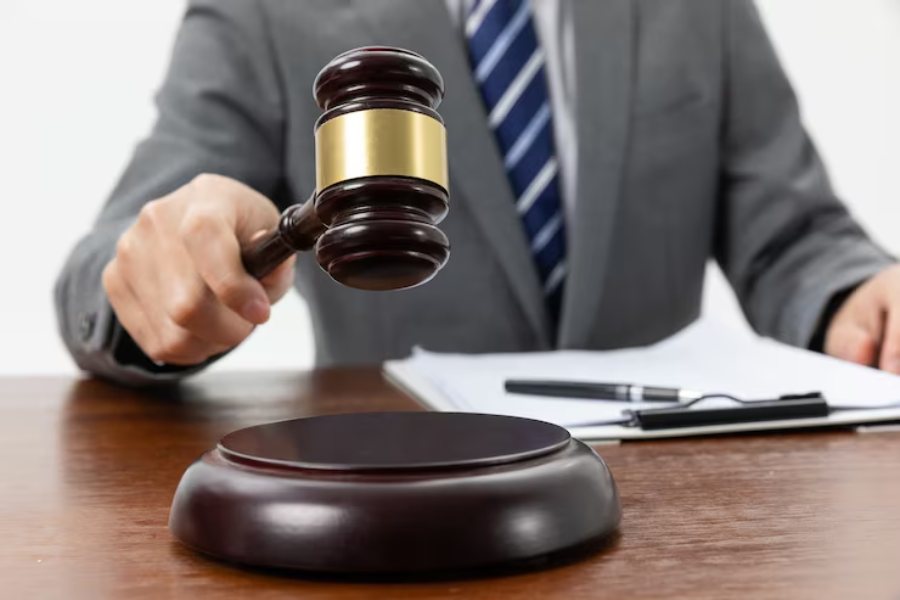Why would judicial release be denied? Judicial release refers to the temporary or permanent release of a person from jail or prison before their trial or sentencing, typically under conditions such as posting bail or attending court-mandated programs. While it may seem like a straightforward process, many factors can influence whether a judicial release request is granted or denied. Courts weigh various legal criteria when deciding whether to grant release, including the nature of the offense, the defendant’s criminal history, flight risk, and potential danger to the public.
In this article, we will explore the main reasons why judicial release may be denied, the process behind these decisions, and how it impacts individuals involved in the criminal justice system. By understanding the factors at play, you can gain a clearer perspective on the complexities of judicial release and the judicial system as a whole.
Why would judicial release be denied?
Judicial release may be denied for several reasons, including the seriousness of the offense, the defendant’s criminal history, flight risk, or potential danger to others. If the court believes that releasing the individual would pose a risk to public safety or that the defendant might fail to appear for trial, the release request is likely to be denied. Courts also consider whether the person is a repeat offender or has failed to comply with prior release conditions.
What is Judicial Release and Why Does it Matter?
Judicial release is an essential aspect of the criminal justice system, allowing individuals to be released from jail or prison before their trial or sentencing under specific conditions. The purpose of judicial release is to ensure fairness and uphold the presumption of innocence while allowing defendants to prepare for their defense outside of detention. However, several factors influence whether a release will be granted, with courts evaluating the defendant’s history, the seriousness of the offense, and potential risks.
The nature of the offense is a key consideration in judicial release decisions. Serious crimes, such as violent offenses, are more likely to result in a denial of release due to concerns over public safety. Other factors, including the defendant’s criminal history, the likelihood of fleeing, and the potential risk to society, also play a role. Judicial release ensures that defendants are treated fairly while maintaining public safety.
Judicial release can be denied due to concerns about public safety, the risk of the defendant fleeing, or the potential for reoffending. Courts balance these factors to protect society while safeguarding the rights of the defendant.
Factors That Influence Judicial Release Decisions
Various factors contribute to judicial decisions on release. The seriousness of the offense is the most crucial factor, with violent crimes or felony charges typically leading to a denial of judicial release. Courts consider the defendant’s criminal history, the risk of reoffending, flight risk, and whether the individual poses a threat to public safety.
Criminal History and Recidivism Risk
Defendants with a criminal history or those considered at high risk of reoffending are often denied judicial release. Courts also assess whether the individual has violated release conditions in the past. Those with a record of noncompliance or further criminal behavior are seen as higher risks, leading to the denial of release. In some cases, judicial decisions are made quickly, and using tools like a minute timer can help ensure the process remains focused and efficient without missing critical details.
The Role of Flight Risk in Judicial Release Decisions
Concerns about flight risk also play a key role in the judicial release decision. If there is a belief that the defendant may flee the jurisdiction to avoid trial, the court is likely to deny release. The assessment of flight risk considers factors such as the defendant’s ties to the community and past behavior.
Judicial Release Process Explained
The process of judicial release begins with a hearing where the defendant or their lawyer presents arguments for release. The judge then reviews several key factors to make a decision.
- Court Considerations in Judicial Release Hearings: In hearings, the judge evaluates a variety of legal factors, including the defendant’s background and criminal history, to determine if judicial release is appropriate.
- Nature of the Crime: The seriousness of the crime plays a significant role in the decision. More serious offenses, particularly violent crimes, are less likely to result in release.
- Criminal History and Risk Assessment: Judges also assess the defendant’s prior criminal record and the risk they pose to public safety. A history of reoffending or violating prior release conditions increases the likelihood of denial.
- Available Evidence: Evidence presented during the hearing, such as character references or the defendant’s ties to the community, may influence the judge’s decision on release.
Legal Framework Surrounding Judicial Release
The legal foundation for judicial release decisions is based on statutes, case law, and the discretion of the judge. Judges must ensure that their decisions align with constitutional principles, ensuring fairness while also considering public safety.
- Statutes and Case Law: Judicial release decisions are grounded in specific statutes and established case law. These legal frameworks guide the judge’s discretion in determining whether release is appropriate based on the circumstances of the case.
- Judicial Discretion: Judges have the discretion to grant or deny judicial release, but their decisions must be made within the confines of the law. They must balance factors like the nature of the offense, the defendant’s history, and any potential risks.
- Constitutional Rights and Judicial Release: Courts must ensure that denying release does not infringe upon the defendant’s constitutional rights, particularly the right to be free from excessive detention. This balance between protecting individual rights and maintaining public safety is crucial in judicial decisions.
The Impact of Judicial Release on Defendants and Society
Judicial release decisions not only affect defendants but also influence public perception of the justice system. The reasons behind the denial of judicial release provide valuable insights into how the legal system strives to balance fairness, justice, and public safety. When release is denied, it highlights the importance of protecting the community while ensuring defendants’ rights are not violated.
Consequences of Denying Judicial Release
Denying judicial release can lead to prolonged pretrial detention, which has significant consequences for the defendant. Prolonged detention may affect their personal life, employment, and legal outcomes, potentially leading to a disadvantage during trial preparation. However, such decisions are made with careful consideration to ensure that individuals who present a risk to public safety remain in custody, protecting society from potential harm. Although the decision to deny release can be difficult, it reflects the judiciary’s duty to safeguard the community while ensuring justice is served.
Conclusion
Judicial release may be denied for several key reasons, such as concerns about public safety, the risk of the defendant fleeing, or the seriousness of the offense. The judicial release process involves a careful evaluation of these factors, with courts striving to balance fairness and the protection of society. By considering the nature of the crime, the defendant’s history, and potential risks, courts make decisions that aim to ensure justice while maintaining public safety. Understanding why release may be denied provides insight into how the justice system operates, ensuring that individual rights are upheld without compromising the safety of the community.
FAQ’s
What is judicial release?
Judicial release allows a defendant to be released from jail or prison before their trial or sentencing, usually under specific conditions like bail or electronic monitoring. It allows the defendant to prepare for trial outside of detention.
Why might a judge deny judicial release?
A judge may deny judicial release if the defendant poses a risk to public safety, is considered a flight risk, or has a criminal history that suggests they may reoffend. The judge evaluates the overall risk to society when making this decision.
How does the court determine flight risk in judicial release cases?
The court considers factors such as the defendant’s ties to the community, criminal history, and any previous attempts to flee. These factors help assess whether the defendant might attempt to evade the trial.
Can judicial release be denied for minor offenses?
While more common for serious offenses, judicial release can be denied for minor offenses if there are concerns about public safety or the defendant’s potential to reoffend. The risk posed to society remains a key consideration.
What happens if judicial release is denied?
If judicial release is denied, the defendant remains in custody until trial or sentencing. However, they may appeal the decision or request reconsideration if new evidence or circumstances arise.
Robert Stewart is a seasoned law blog writer with a passion for translating complex legal concepts into accessible, informative content. With a keen eye for detail and a knack for storytelling, Robert crafts engaging articles that educate and empower readers in the realm of law.
Drawing upon his extensive experience in the legal field, Robert brings a wealth of knowledge to his writing, covering a diverse range of topics including personal injury, family law, criminal defense, and more. His articles combine thorough research with clear, concise language, making them valuable resources for both legal professionals and laypeople alike.


